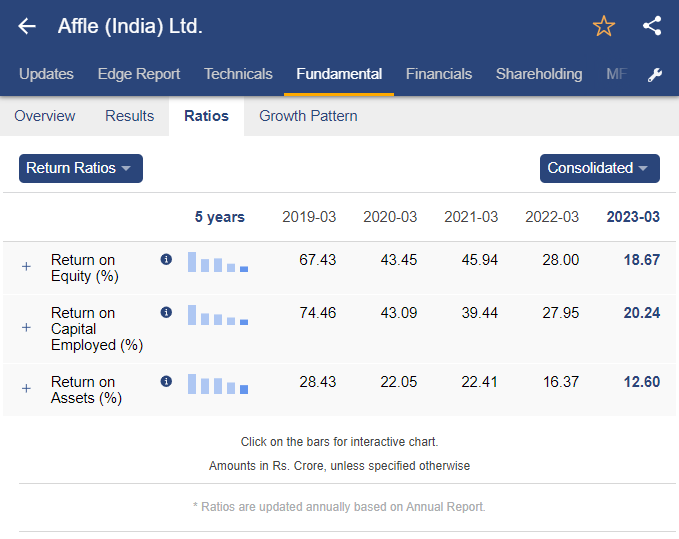Top 10 Suggestions For Evaluating The Strategy Customization Of Ai Stock Predicting/Analyzing Trading Platforms
AI software for predicting or analyzing stocks offers numerous options for customization that let users adapt their platform to their specific trading objectives in terms of risk-taking, as well as market condition. A platform that offers a variety of options for customization can improve your trading. Here are the 10 best tips for evaluating the customization options of these platforms.
1. Evaluate Pre-Built Strategy Templates
A variety of templates. Check whether the platform has a wide variety of pre-built strategies for different trading types (e.g. day trading, swing trading, or long-term investing).
Usability: Consider how easily these templates can be modified to meet your needs.
Performance history: Determine whether the platform has historical performance information for the pre-built strategies.
2. Assess the Custom Strategy Development
Drag-and-drop tools: Select platforms with drag-and-drop interfaces which allow you to easily create custom strategies.
Coding Options: If you are a skilled user, make sure the platform is able to support custom coding.
Flexibility: Ensure the platform allows you to define entry/exit requirements, risk management parameters, and other essential elements of your strategy.
3. Check for Backtesting Capabilities
Historical data: Verify if the platform has enough historical data for backtesting your strategies.
Flexible settings: Ensure you have the capability to change parameters during backtesting.
Performance metrics: Ensure that the platform offers detailed measures of performance (e.g. Win rate, Sharpe Ratio, Drawdown) when backtesting strategies.
4. Evaluate Real-Time Strategy Testing
Paper trading: Test strategies in real-time with paper trading or simulation.
Live testing Try your strategies out on live markets by using small amounts of capital to evaluate their performance.
Real-time adjustments: Verify if you can tweak strategies according to market conditions.
5. Examine the integration using technical indicators
Indicator libraries: Make sure the platform includes a complete collection of tools for technical use (e.g. MACD, RSI and moving averages).
Custom indicators: Make sure that you have the ability to import or develop custom indicators for your strategies.
Check the combination of indicators.
6. Check for Risk Management Tools
Stop-loss/take-profit: Ensure the platform allows you to set stop-loss and take-profit levels within your strategies.
Size of your position. Check whether you have rules in place for the best way to handle the risk (e.g. an amount that is set per portfolio, percentage).
Risk-reward-ratio: Verify the platform's support for setting risk/reward ratios for individual trades or trading strategies.
7. Evaluate Multi-Asset Strategy Support
Asset classes: Ensure that the platform supports different asset classes, such as stocks, ETFs and options.
Cross-asset Strategies: Determine if it is possible to develop strategies that combine multiple asset classes.
Market coverage. Check if the platform includes the markets that you're looking to invest in (e.g. US international, cryptocurrencies).
8. Assess Automation and Execution
Automated trading: Ensure that the platform is capable of automating strategies that are based on the predefined rules.
Order types: Determine if your platform supports different types of orders (e.g. market limit, limit, or stop) to implement a the strategy.
Latency: Verify that the platform is running at minimal latency for trading, especially if use high-frequency strategies.
9. Check out Strategy Optimization Tools
Parameter optimization - Ensure that the platform has tools to optimize your strategy's parameters.
Integration of machine learning: Find out if the platform integrates machine learning to improve and improve strategies.
Scenario Analysis: Check if the platform supports testing strategies across different market scenarios (e.g. bull, bear and volatile).
Review User Comments
Feedback from users Conduct research on users to evaluate the effectiveness of the platform in creating a custom strategy.
Community forums: Find out if the platform has an active community in which users can discuss and share their custom strategies.
Support resources: Ensure that the platform offers tutorials, webinars, or documents which will assist users in developing and enhance their strategies.
Bonus Tips
Trial period: Test the features of the platform to customize your experience at no cost by registering for a trial or demo.
Scalability: Ensure the platform is able to manage complex strategies that change when you trade.
Customer support: Find out for assistance with strategy-related questions or issues.
These tips will help you assess the options for customization of AI trading platforms that can predict or analyze stocks. So you'll be able pick one that best suits your goals in trading, which allows you to refine and implement strategies. A platform that has a wide range of customization options will allow you to better adapt to market fluctuations and enhance the performance of trading. View the best ai stock trading for more tips including trader ai review, incite ai, stock analysis tool, trader ai intal, ai trading, using ai to trade stocks, ai invest, ai stock picker, ai invest, ai stock picks and more.

Top 10 Tips For Assessing The Risk Management Of Ai Stock-Predicting/Analyzing Platforms
Risk management is a key element of every AI trading platform. It can help protect your investment and minimize the possibility of losses. A platform with robust risk management tools can aid you navigate the market volatility and make well-informed choices. Here are 10 top strategies for evaluating the risk management capabilities of these platforms. capabilities:
1. Review Stop-Loss and Take-Profit Features
Levels that can be customized - Make sure that the platform allows you adjust your stop-loss, take profit and profit levels for every strategy or trade.
Make sure you are able to use trailing stops. They will automatically adjust if the market moves to your advantage.
Stop-loss guarantees: Check to find out if the platform offers stop-loss guarantees, which will assure that your trade will close at a certain price in even volatile markets.
2. Measure Positions Tools
Fixed amount: Check that the platform you're using allows you to adjust the size of your position in accordance with a set amount.
Percentage of your portfolio: See whether you can establish the size of your positions in percentages of your portfolio total to control risk in a proportional manner.
Risk-reward: Make sure your platform lets you define risk-rewards for each trade or strategy.
3. Make sure you check for support for Diversification.
Multi-asset trading : Make sure the platform allows you to trade across different asset classes, like ETFs, stocks, as well as options. This will allow you to diversify your portfolio.
Sector allocation: Make sure the platform includes tools to monitor the sector's exposure.
Geographic diversification. Make sure the platform is able to trade on international markets and spread geographic risks.
4. Review leverage control and margins.
Margin requirements: Ensure that the platform clearly discloses margin requirements for trading leveraged.
Limits on leverage: Find out whether the platform permits you to set leverage limits to limit the risk of exposure.
Margin calls - Examine to see if your service informs you about margin calls promptly. This will prevent liquidation.
5. Assess Risk Analytics Reporting
Risk metrics - Ensure that your platform has important risk indicators like the Sharpe ratio (or Value at Risk (VaR)), or drawdown (or value of the portfolio).
Scenario analysis: Find out whether the platform allows you to simulate different market scenarios to assess potential risks.
Performance reports - Make sure that the platform provides comprehensive performance reports, which include risk adjusted returns.
6. Check for Real-Time Risk Monitoring
Portfolio monitoring - Ensure that the platform you choose has real-time monitoring in order to ensure your portfolio is secure.
Alerts and notifications - Check that the platform has sent out real-time alerts when risk events happen (e.g. Margin breaches or triggers for stop-loss order).
Risk dashboards - Check to see if the platform you are using offers customizable risk dashboards. This will provide you with an overview of the risks you're facing.
7. Tests of Backtesting, Stress Evaluation
Stress testing. Make sure that the platform permits you to stress test the portfolio or strategy in extreme market conditions.
Backtesting. Find out if the platform allows for backtesting, which is the use of historical data to assess the risk and the performance.
Monte Carlo Simulations: Check if the platform utilizes Monte Carlo simulations in order to analyze and predict the possible results.
8. Risk Management Regulations - Assess Compliance
Ensure that the platform meets the regulatory compliance requirements (e.g. MiFID II regulations in Europe, Reg T regulations in the U.S.).
Best execution : Check to see if your platform follows the most efficient execution methods. This will ensure that trades are executed at the most efficient price while minimizing slippage.
Transparency. Verify that the platform is transparent and makes clear disclosures of the risks.
9. Check for User-Controlled Parameters
Custom risk rules: Ensure the platform permits you to create custom risk management guidelines (e.g. maximum daily loss, maximum size of position).
Automated risk controls: Check whether the platform can automatically enforce rules for risk management based on your defined parameters.
Manual overrides: Check if the platform allows manual overrides for automated risk control in the event of emergencies.
Reviews of User Feedback and Case Studies
User feedback: Read user reviews to determine the platform's capacity to manage risk.
Testimonials or case studies should demonstrate the platform's ability to mitigate risks.
Community forums: See whether a platform is home to a community of users who want to share strategies and strategies for managing risks.
Bonus Tips
Trial period: Take advantage of a free trial or demo to test the features of the platform for risk management in real-world scenarios.
Customer support: Make sure the platform offers a solid support to any questions or issues that are related to the management of risk.
Educational resources: See if there are any educational resources that cover the best practices for managing risk.
These tips will assist you in evaluating risk management capabilities offered by AI platform for predicting or analyzing stocks. You'll be able to choose a platform to safeguard your investment while limiting the possibility of losses. The use of robust risk management tools is essential for navigating volatile markets and achieving long-term trading success. Check out the top ai trading tools info for website advice including trading ai bot, ai stock, free ai tool for stock market india, ai trade, ai investment platform, ai stock trading app, copyright ai trading bot, ai trading bot, ai for trading, canadian ai stocks and more.

Comments on “20 Free Facts For Deciding On Ai Stock Market Websites”